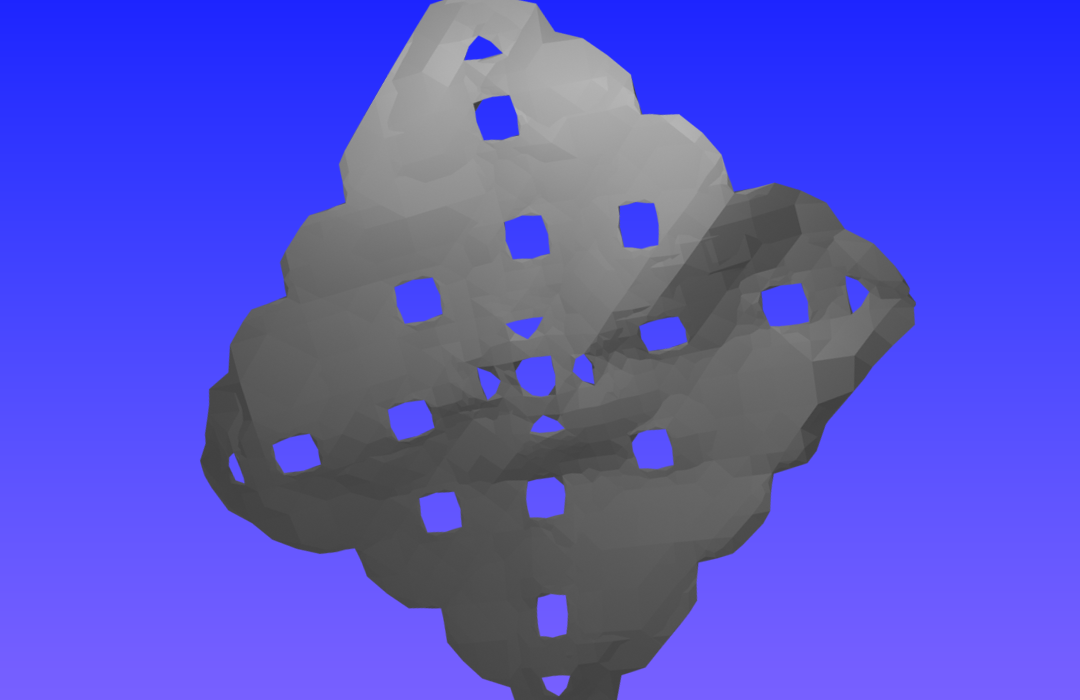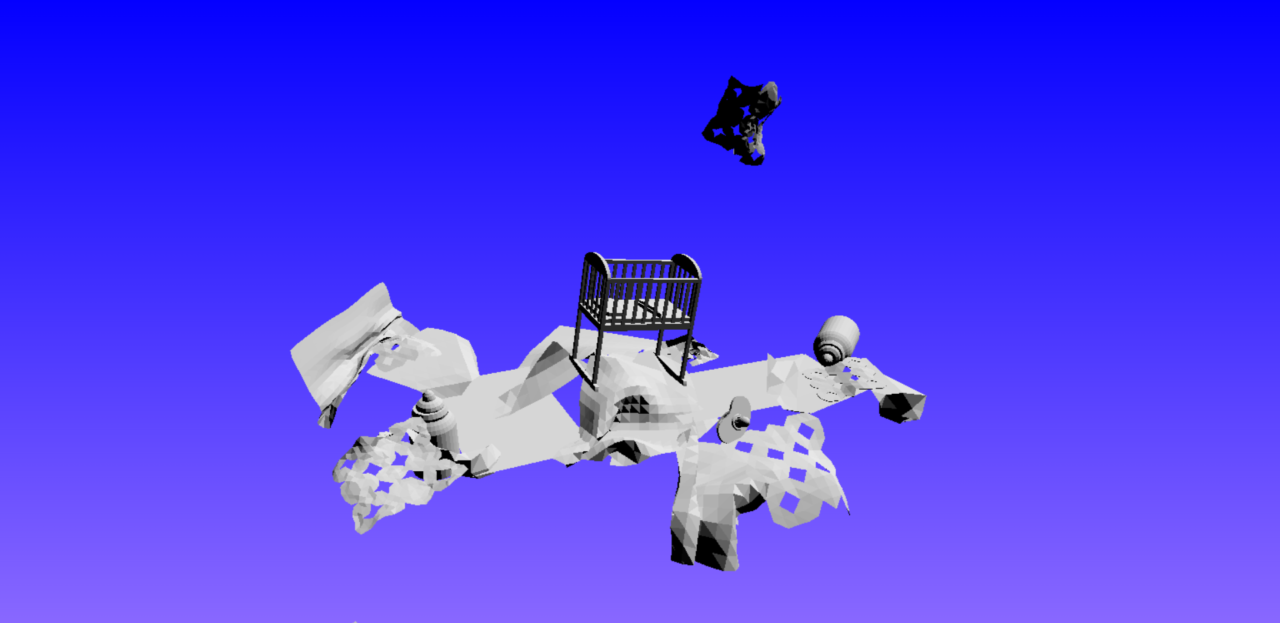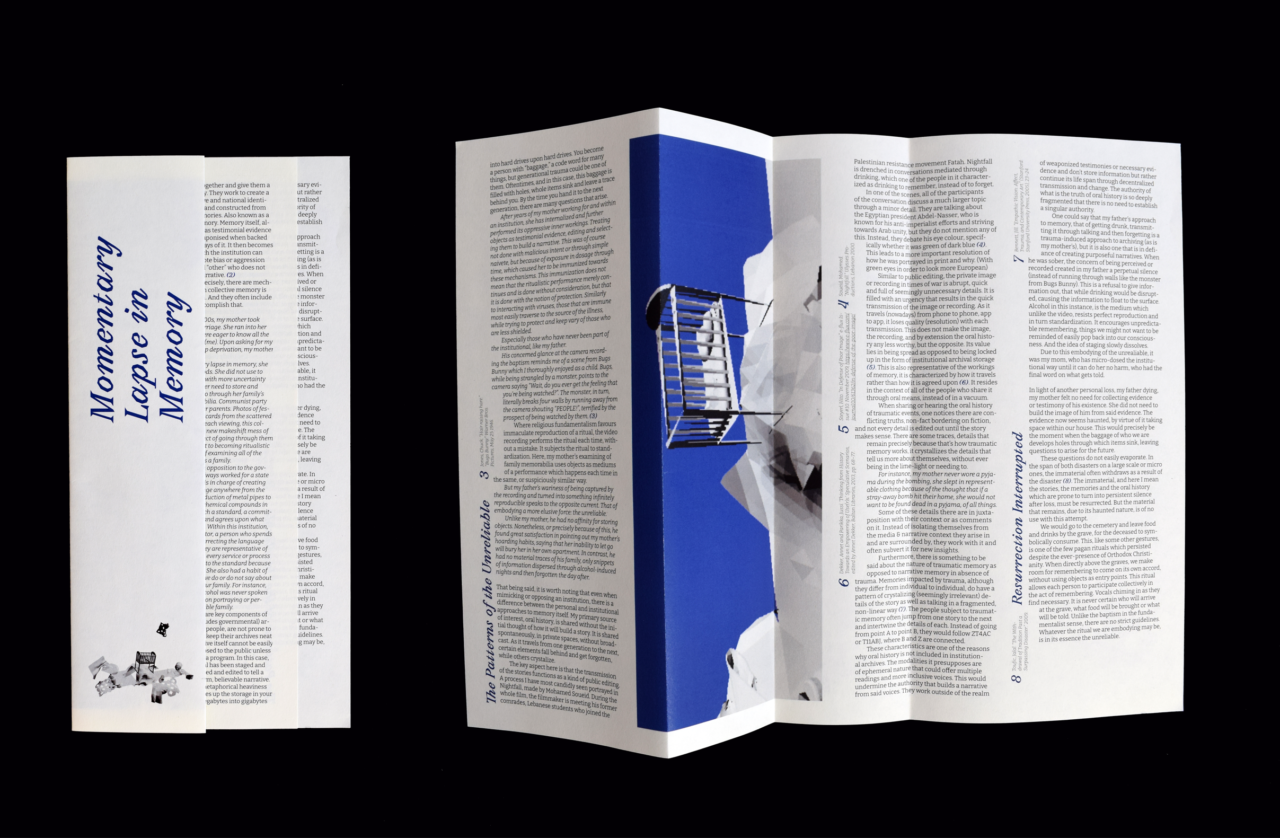Momentary Lapse in Memory

Project details
- Year
- 2022
- Programme
- graphic-design
- Practices
- No practice
- Minor
- Visual Culture
Momentary Lapse in Memory is an interactive digital environment concerning the memory landscape of the 1999 NATO bombing of Yugoslavia. It investigates the impact of ephemeral factors on the archival practice. By doing so, it makes space for the unreliable mechanisms of both memory and its transmission, to steer and sway.

This multi-sensory experience consists of the recorded oral history of my friends and family who have been in the most heavily impacted district during the bombing. Within the work, each interviewee got a designated memory space where the objects they mentioned in the interviews I’ve conducted with them are reconstructed in uncanny ways. When interacting with the room’s objects, fragments of that person’s memory resurface. Each interaction with the objects follows a different succession and in turn, creates a different non-linear narrative.
A vital component of the work is sound, particularly the presence of both sonic warfare and calming sounds in times of conflict. This contrasts the notion that war is a time of merely grave experiences. The sonic aspect is present in the form of soundscapes, constructed in a different way for each interviewee’s sound-related memories. Mimicking the reality the interviewees had, it is constantly looping in the background and cannot be avoided.


Momentary Lapse in Memory scrutinises the creation of monumental narratives which weaponize collective memories and turns toward inquiring about how oral histories of traumatic events can exist without being instrumentalized. Essentially, it works to find alternatives to institutional storytelling, through a different approach to media and storytelling.

To go through the archive of this oral history, click here.
To view the previous iteration of this project, Resounded Ruins.

The work is supplemented by a written essay titled In Defense of the Momentary Lapse in Memory. The essay analyses how institutional and trauma-affected archiving impact or infuse themselves in our lives. It does so by examining found footage of my family filmed during the war and their archival practices in the aftermath of it. As a piece of writing, it also offers critical insight into the theoretical spine of the project.